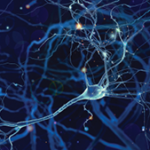Experimental pain studies in humans have shown that women display greater sensitivity to pressure, electrical, thermal, and intramuscular injections of irritating solutions, Dr. Arnold explains. A study that used positron emission tomography (PET) showed that when a heat stimulus was adjusted to elicit the same pain report in men and women, men showed an activation pattern that suggested sensory process dominance, while women showed activation suggesting affective integration of sensory input.5 “It’s not clear what this means, but maybe neuroimaging can help us understand sex differences in pain responses,” says Dr. Arnold.
“The next big area is the influence of hormonal factors. What’s happening in girls to increase the prevalence of migraine, temporomandibular disorders, and other pain conditions at puberty?” she asks. Data collected to date suggest that fluctuating estrogen levels during the menstrual cycle may intensify musculoskeletal pain and migraine symptoms.
“We also think that the peripheral and central effects of estrogen may be divergent and that estrogens can have pro- and antiinflammatory effects. Estrogen may also affect the endogenous opiate system,” says Dr. Arnold. “The bottom line is that a role for estrogen is suggested, but it’s a complicated one and still under study.”
Mechanisms for pain coping also differ in men and women, according to Dr. Arnold, with women generally being at greater risk for internal catastrophizing, or “focusing on overwhelming, negative aspects,” in response to pain, she explains. Catastrophizing contributes to the pain experience and may account for sex differences in diffuse noxious inhibitory controls (DNIC). Dr. Arnold says that men show greater DNIC, a descending pathway that modulates pain inputs to the brain, than women do. Further, sex differences in DNIC are not significant after catastrophizing has been controlled for.6,7
Not surprisingly, investigators in this field have also explored how gender roles and expectations influence pain perceptions. The male norm is marked by increased pain tolerance, the female norm by acceptance of pain as a normal part of life, with more leeway for expression about it. When individuals are evaluated for “masculinity” and “femininity,” explains Dr. Arnold, greater femininity predicts more intense experimentally induced pain.4
Compared with men, women are at greater risk for pain undertreatment. “Maybe it’s because women express pain more. When a man finally says something about pain, he’s taken more seriously,” she says. “On the other hand, a woman’s psychological complaints are taken more seriously than men’s.”
In coming years, Dr. Arnold hopes that clinicians can be educated to think about chronic pain as a disease process. She adds that one goal might be to find ways to accurately assess DNIC in a busy clinic. She also urges her colleagues to take advantage of a multidisciplinary approach to pain management and to individualize treatment.
Studying Pain in Children
At the start of her presentation on pain in children, Laura E. Schanberg, MD, professor of pediatrics at Duke University School of Medicine in Durham, N.C., reminded her audience that prior to the 1990s, infants and young children received minimal anesthesia and little or no postoperative pain management. As recently as 1986, half of pediatricians, surgeons, and family practitioners assumed that infants did not experience pain in the first month of life.8



